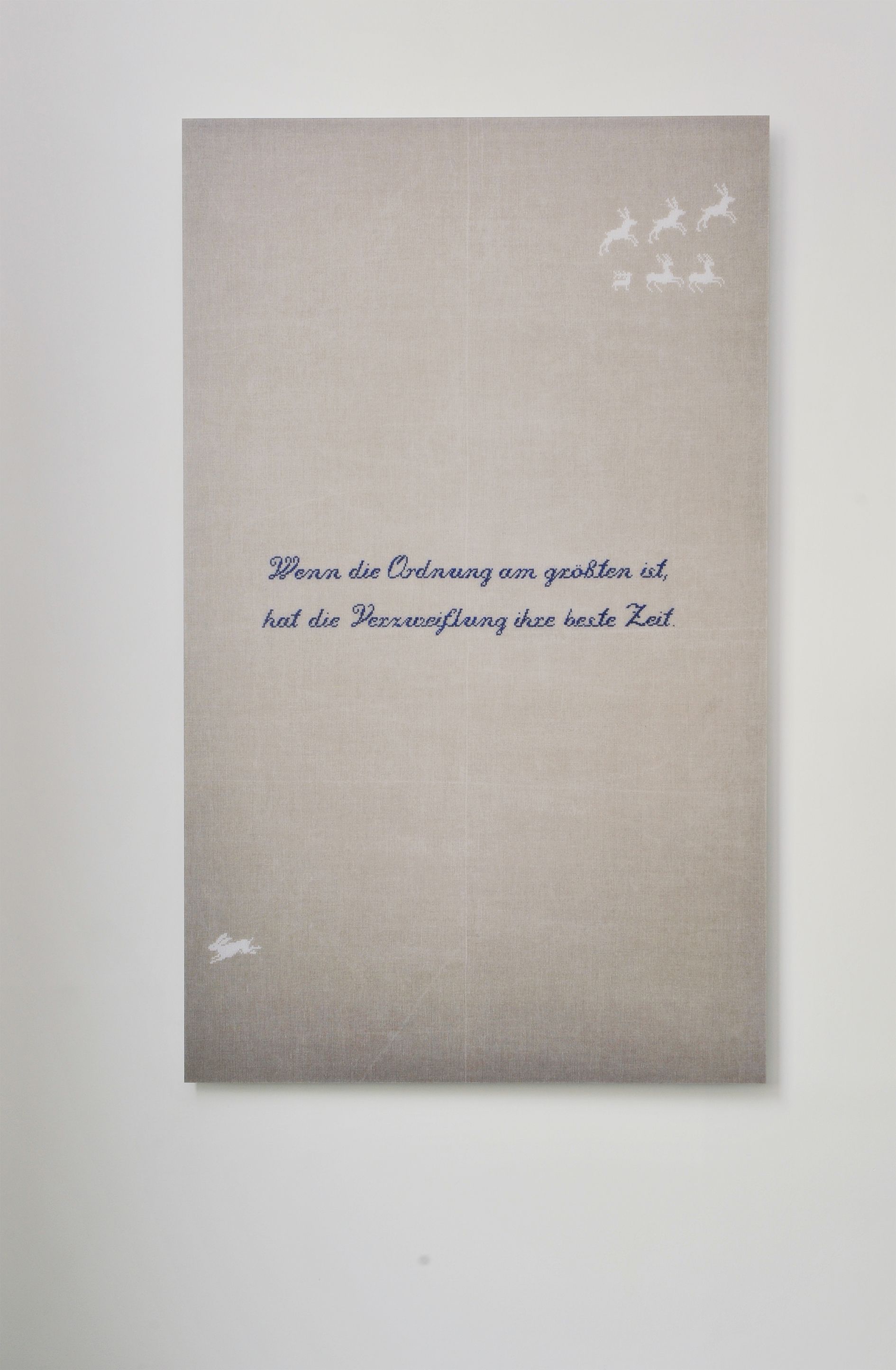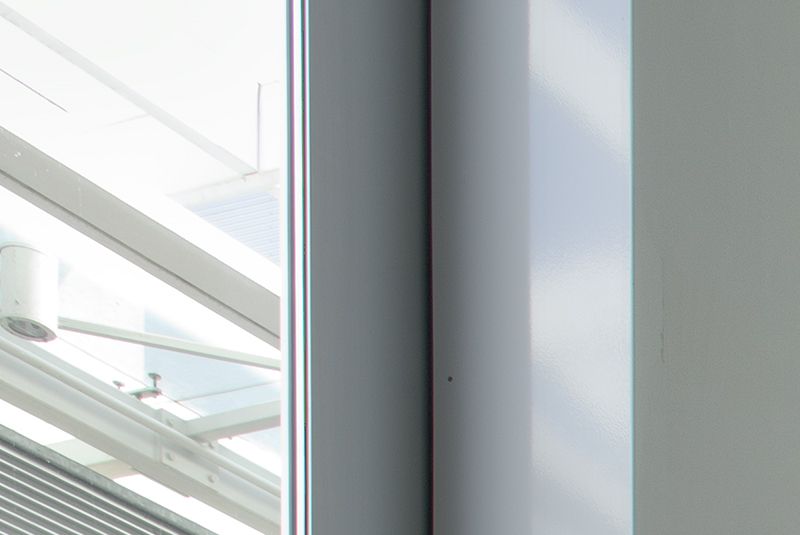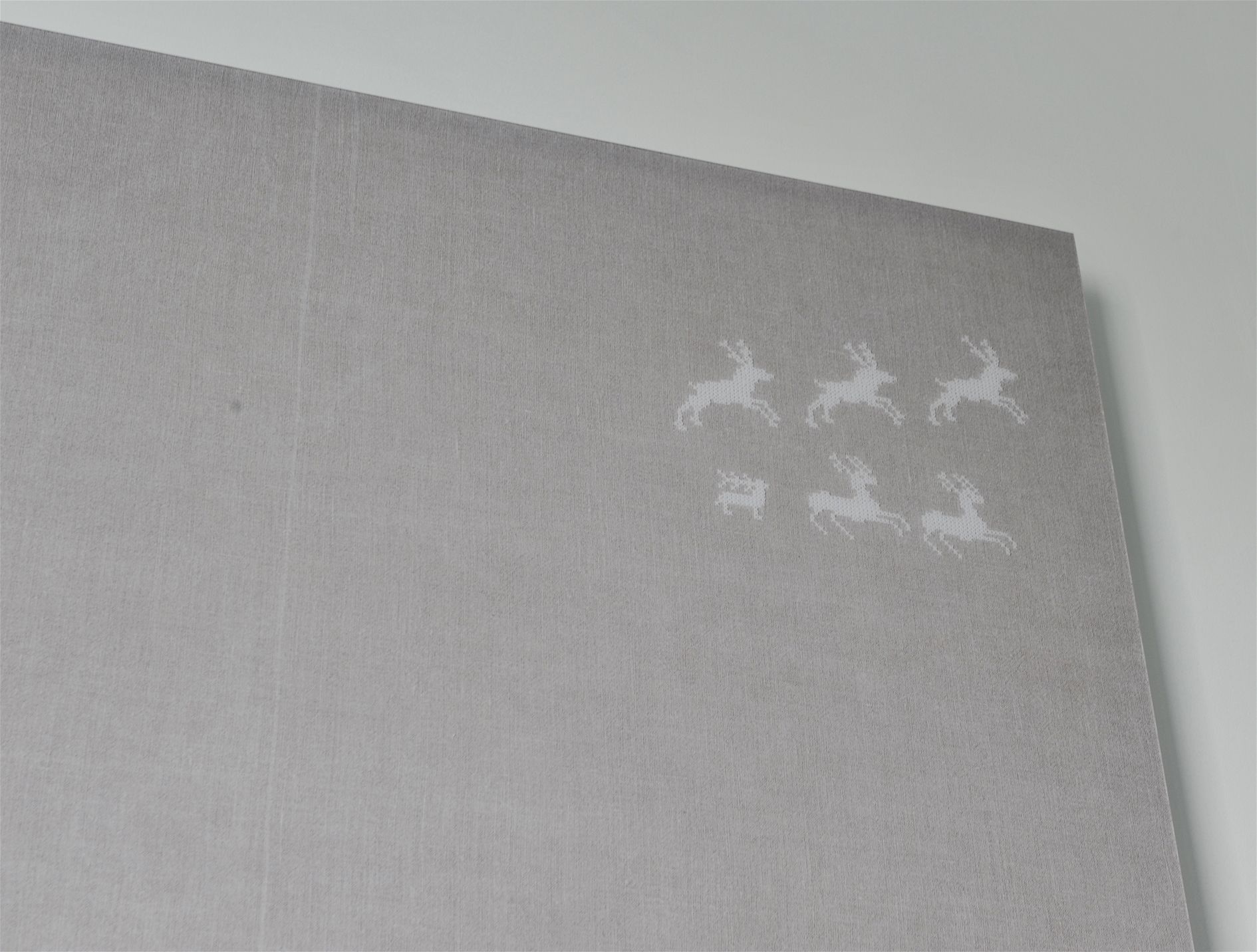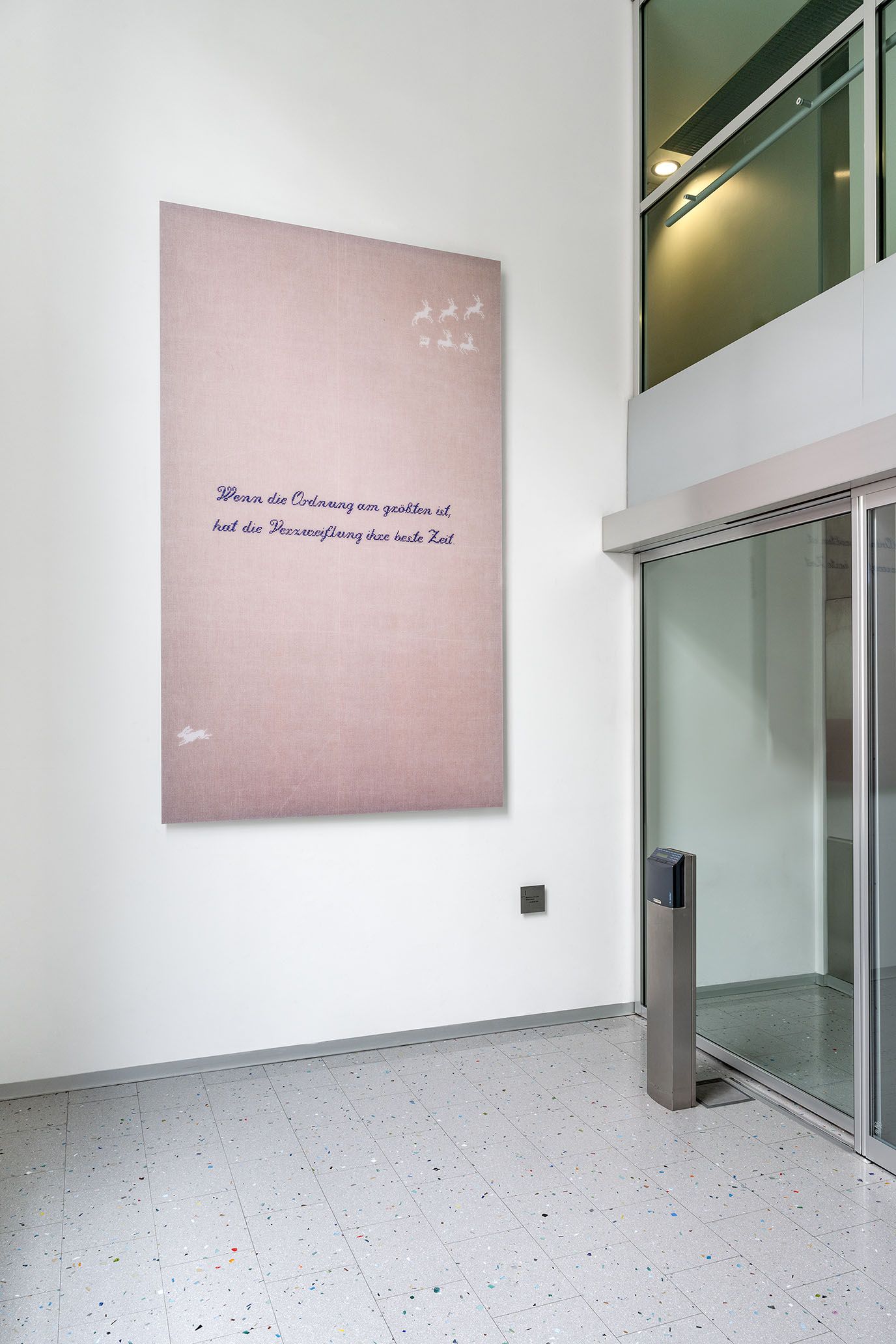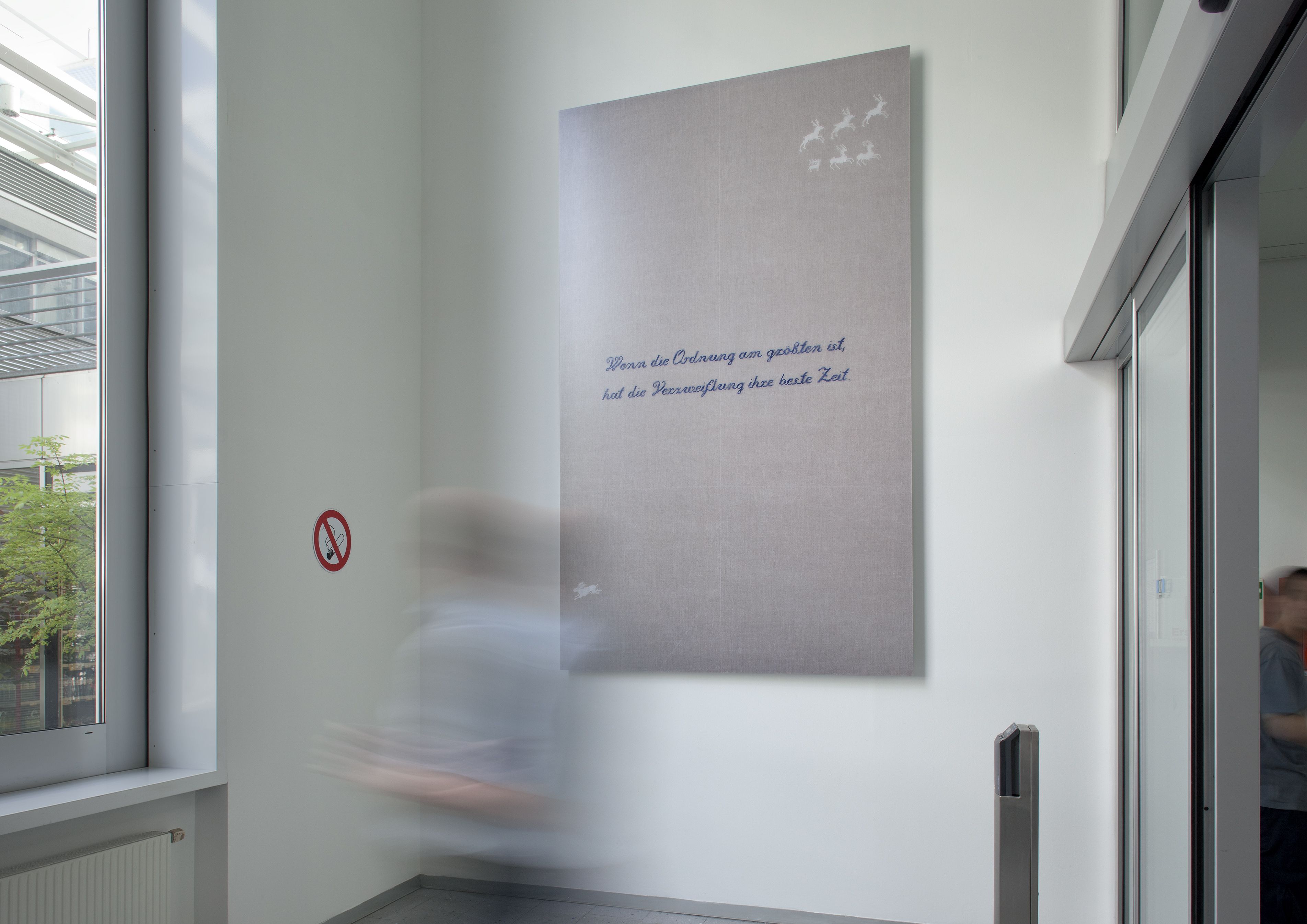Marlene Streeruwitz,
Lina Streeruwitz
:
Verstickung.
Back
Information
The mixed-media work that Marlene and Lina Streeruwitz conceived and actualized for the entrance area of Haus 4 of the Lower Austrian government complex (photography: Christian Wachter) affects the viewer as being as subdued in its aesthetic reduction of color and form as it is assertive of strong presence by virtue of its mere size and of the verbal statement that it bears. On a monochrome surface of 1.8 m x 3 m, a sentence is crystallized in the middle, in the upper right and lower left corners wild animals are seen fleeing towards the edges of the picture. The discrepancy between withdrawal and projection, fading and emerging, space and surface, concentration and disparity, creates both tension and irritation, which pervade the work in all its structures, catching the eye and making the viewer/reader pause, puzzled, as if she or he has just fallen out of the prevailing continuum.
Formally, "Verstickung." presents itself as a quotation of folk wisdom and blessings, of the kind that can be seen embroidered on wall hangings that decorate kitchens especially, the cozy hubs of home and homeland, affirmations of the prevailing system of order and values – in order to subvert them on all levels. Although remarkable for its elegant simplicity, this is a highly complex work that combines various artistic media – language, literature/poetry, textile design/embroidery, painting, photography and interior design – and creates links between areas of production of so-called high culture and popular culture, and at the same time it raises questions concerning art intervention in public space, questions of boundaries between anonymous and authorized art, between private and public art. The foundation or source material underlying the photographic work is a piece of linen cloth, the ground fabric on which embroidery is worked and the classical medium of the pictorial art, of painting. Whether stretched over a picture frame or into an embroidery frame, the function of the cloth is in either case to take up the message to be conveyed. As a woven fabric, as a "fragile network of surfaces", it is also situated within the associative range of language and literature. In the soft, pastel, flesh tones, which at times seem almost diaphanous – a color atmosphere characteristic of Marlene Streeruwitz’ text world – there is an aura that carries with it the thin membrane between the outer and inner worlds, the vulnerability of the human – especially the female – body and the vulnerability of female life designs.
And this is the ground fabric into which the author Marlene Streeruwitz incorporates the outrageousness of language, the cross-stitches of what is presumably a self-contained, full sentence. The work derives a special appeal from the fact that the spatial artist Lina Streeruwitz transfers this poetic process to linen and royal blue mercerized yarn, thus depicting it, that is, allows the "Verstickung." to take place on a meta-level of poetic analysis and art as a dialogue between the arts and artists. This double artistic approach, together with the almost hyper-realistic enlargement by means of photography that highlights the structures, gives the work its depth, its subtleness and its effectiveness. With the embroidered sentence, "Wenn die Ordnung am größten ist, hat die Verzweiflung ihre beste Zeit." ("When order is at its greatest, despair is in its prime."), Marlene Streeruwitz quotes herself – the sentence is taken from her dramatic text "Elysian Park" (1996) and occurs, in a slightly modified form, in Tagebuch der Gegenwart (2002), both times in connection with institutional violence. A formulation complete in itself, the sentence seems to fly in the face of the author’s insistence on breaking up the power of language that rules us – as can be seen in the way she makes cuts in the language of her texts, interrupting full sentences and quotations. However, the parallel drawn between "order" and "despair" stands in diametrical opposition to the prescripts that prevail, and concealed within “disorder”, as "re-order" and "new order" of notions and relations, is the explosive power that puts every kind of domination and violence in question.
In the little barbs of Marlene and Lina Streeruwitz’ "Verstickung.", that specific moment of utopia occurs where grief and resignation – over the absorption of the individual by the work piece, over the smothering of the self in the production process – can overturn and be made fruitful for a new language that bears and reveals the greatest good of all – the dignity and freedom of each individual human being.
(Katharina Herzmansky)
Images (6)
